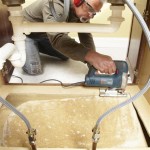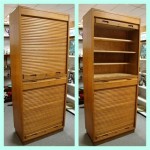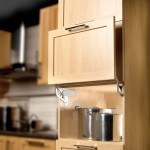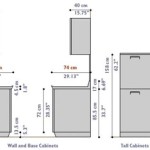Strip Lights Under Kitchen Cabinets: Illuminating Your Culinary Space
Kitchens are often the heart of a home, serving as spaces for cooking, gathering, and socializing. Adequate lighting is crucial for both functionality and ambiance. Strip lights installed under kitchen cabinets offer a versatile and efficient solution for illuminating countertops, providing task lighting, and enhancing the overall aesthetic appeal of the room.
Under-cabinet lighting is a practical addition to any kitchen, addressing common lighting deficiencies. Overhead fixtures often cast shadows, making it difficult to see clearly when performing tasks such as chopping vegetables or reading recipes. Recessed lighting can provide general illumination, but might not adequately target work surfaces. Strip lights placed under cabinets direct light precisely where it is needed most, improving visibility and safety during food preparation.
Beyond functionality, under-cabinet lighting contributes significantly to the kitchen's ambiance. The soft glow emanating from beneath the cabinets can create a warm and inviting atmosphere. This type of lighting can accentuate the textures and colors of countertops, backsplashes, and cabinets, adding visual interest to the kitchen design. The ability to adjust the brightness and color temperature of strip lights allows homeowners to customize the lighting to suit their personal preferences and the specific mood they wish to create.
Selecting the Right Type of Strip Lights
A variety of strip lights are available for under-cabinet installation, each with its own set of advantages and disadvantages. The most common types include LED strip lights, fluorescent strip lights, and xenon strip lights. LED strip lights have emerged as the preferred choice due to their energy efficiency, long lifespan, and versatility.
LED Strip Lights: Light-emitting diode (LED) strip lights are semiconductor light sources that consume significantly less energy than traditional incandescent or fluorescent bulbs. This translates to lower electricity bills and reduced environmental impact. LED strip lights also have an exceptionally long lifespan, often lasting for tens of thousands of hours, minimizing the need for frequent replacements. These lights are cool to the touch, reducing the risk of burns. They are available in a wide range of colors and brightness levels, offering extensive customization options. LED strip lights can be easily cut to desired lengths and are typically installed with adhesive backing, simplifying the installation process. The initial cost is generally higher than other options, but the long-term energy savings and durability offset this expense.
Fluorescent Strip Lights: Fluorescent strip lights are an older technology that uses a gas-discharge lamp to produce light. While more energy-efficient than incandescent bulbs, they are less efficient than LEDs. Fluorescent strip lights also contain mercury, requiring special disposal procedures. They produce a broader spectrum of light than incandescent bulbs, but the color rendering is often less accurate than LEDs. Fluorescent strip lights can flicker, which can be distracting or irritating for some individuals. The lifespan of fluorescent strip lights is shorter than that of LEDs, requiring more frequent replacements. While the purchase price of fluorescent strip lights is generally lower than that of LEDs, the ongoing operating costs are higher due to increased energy consumption and shorter lifespan.
Xenon Strip Lights: Xenon strip lights use a rare gas to produce a bright white light. They offer good color rendering and have a relatively long lifespan compared to incandescent bulbs, although they are still less durable than LEDs. Xenon strip lights can get quite hot during operation, posing a potential burn hazard. They are also less energy-efficient than LEDs, resulting in higher electricity bills. Xenon strip lights are typically more expensive than fluorescent strip lights but less expensive than high-end LED options. However, the maintenance costs associated with replacing bulbs more frequently, and the higher energy consumption, can make them less economical in the long run.
Installation Considerations
Proper installation is essential for ensuring the optimal performance and longevity of under-cabinet strip lights. Several factors should be considered before starting the installation process, including the placement of the lights, the power source, and the wiring configuration.
Placement: The placement of strip lights under kitchen cabinets directly influences the effectiveness of the lighting. For optimal task lighting, the lights should be positioned towards the front edge of the cabinet, directing the light onto the countertop. This minimizes shadows and provides ample illumination for food preparation and other tasks. When installing strip lights along the entire length of the cabinet, ensure that the light is evenly distributed. This can be achieved by using continuous strip lights or by carefully spacing individual light fixtures. For cabinets located above a sink, consider using waterproof or water-resistant strip lights to protect against moisture damage.
Power Source: The power source for under-cabinet strip lights can be either hardwired or plug-in. Hardwired lights are connected directly to the electrical system, requiring professional installation. This option is suitable for new construction or major kitchen renovations. Plug-in lights are easier to install, as they simply plug into a standard electrical outlet. This option is ideal for retrofitting existing kitchens. If using plug-in lights, ensure that the outlet is conveniently located and that the power cord is concealed to maintain a clean and organized appearance. Many LED strip light kits come with a transformer to convert the voltage from 120V AC to 12V or 24V DC, making them safer to handle. It is essential to adhere to all local electrical codes and safety regulations during installation.
Wiring: The wiring configuration for under-cabinet strip lights depends on the type of lights being used and the desired control scheme. For hardwired lights, a qualified electrician should handle the wiring. For plug-in lights, the wiring is typically pre-assembled. When connecting multiple strip lights, ensure that the wiring is properly sized to handle the electrical load. It is also essential to use appropriate connectors and wire nuts to ensure a secure and reliable connection. Consider using a dimmer switch to control the brightness of the lights. This allows you to adjust the light output to suit your needs and preferences. Remote control options are available for added convenience.
Maximizing the Benefits of Under-Cabinet Lighting
By carefully selecting the right type of strip lights, planning the installation process, and considering various design options, homeowners can maximize the benefits of under-cabinet lighting in their kitchens. This lighting solution offers a combination of functionality, energy efficiency, and aesthetic appeal, enhancing the overall kitchen experience.
Color Temperature: The color temperature of the light emitted by strip lights can significantly impact the ambiance of the kitchen. Color temperature is measured in Kelvin (K), with lower values indicating warmer, more yellow tones and higher values indicating cooler, bluer tones. For kitchens, a color temperature range of 2700K to 3000K is generally recommended for a warm and inviting atmosphere. This range is ideal for creating a cozy and relaxing environment. A color temperature of 3500K to 4000K provides a more neutral white light, suitable for task lighting and general illumination. Higher color temperatures, such as 5000K to 6500K, produce a bright, daylight-like light, which can be useful for detailed work or for creating a more modern look.
Dimming Capabilities: The ability to dim under-cabinet strip lights offers greater control over the lighting in the kitchen. Dimming allows you to adjust the brightness of the lights to suit different tasks and moods. For example, you may want to use brighter lights when preparing food and dimmer lights when entertaining guests. Dimming can also help to conserve energy and extend the lifespan of the lights. Several dimming options are available, including traditional dimmer switches, remote controls, and smart home integration. Smart home integration allows you to control the lights using your smartphone or voice commands.
Smart Lighting Integration: Integrating under-cabinet strip lights with a smart home system adds a layer of convenience and flexibility. Smart lighting systems allow you to control the lights remotely, schedule lighting scenes, and even integrate the lights with other smart home devices. With smart lighting, you can turn the lights on and off, adjust the brightness, and change the color temperature from anywhere using your smartphone or tablet. You can also create custom lighting scenes for different activities, such as cooking, dining, or entertaining. Some smart lighting systems can even be integrated with voice assistants, such as Amazon Alexa or Google Assistant, allowing you to control the lights with voice commands.
In summary, strip lights under kitchen cabinets provide a valuable lighting solution that enhances both the functionality and ambiance of the kitchen. By carefully selecting the right type of lights, planning the installation process, and considering various design options, homeowners can create a well-lit and inviting culinary space.

How To Choose And Install Led Strip Lights For Kitchen Cabinets
Led Under Cabinet Lighting Projects How To Use Strip Lights
Led Under Cabinet Lighting Projects How To Use Strip Lights

The Ultimate Guide To Choosing Best Led Strip Lights For Your Home Simple Lighting Blog

How To Install Led Strip Lights With Step By Tutorial Ultraleds

How To Choose And Install Led Strip Lights For Kitchen Cabinets

Choosing Under Cabinet Lighting For The Kitchen Abby Organizes

Kitchen Cabinet Lighting Using Warm White Led Strip Lights

Led Strip Light Installation Tips Armacost Lighting

Strip Lighting Vs Puck Which Is Better For Undercabinet
Related Posts








